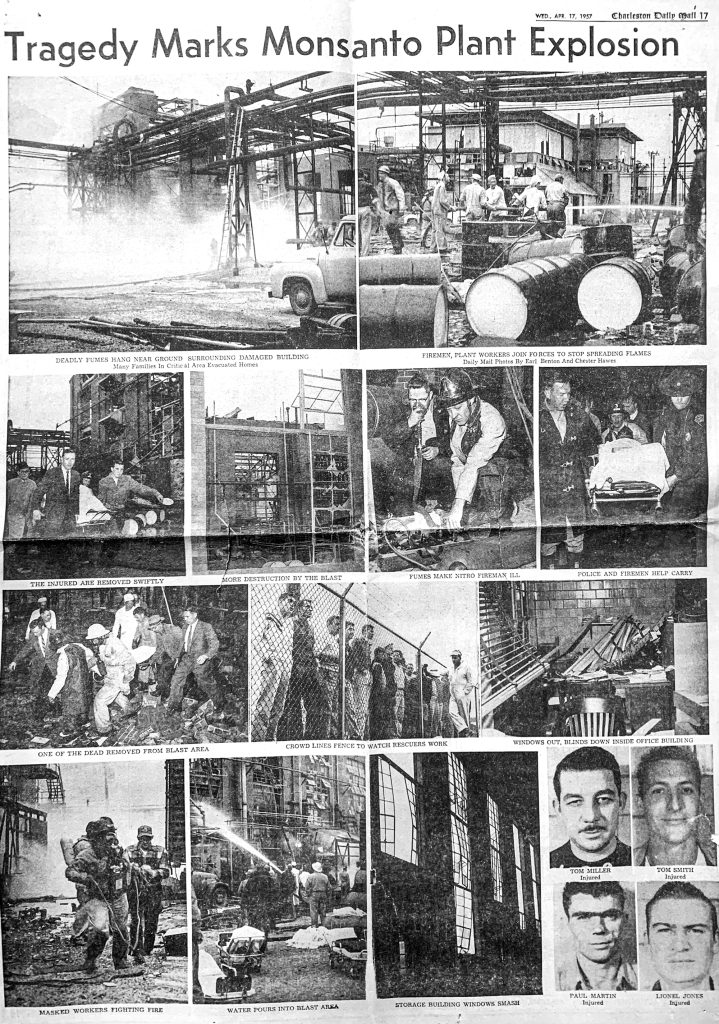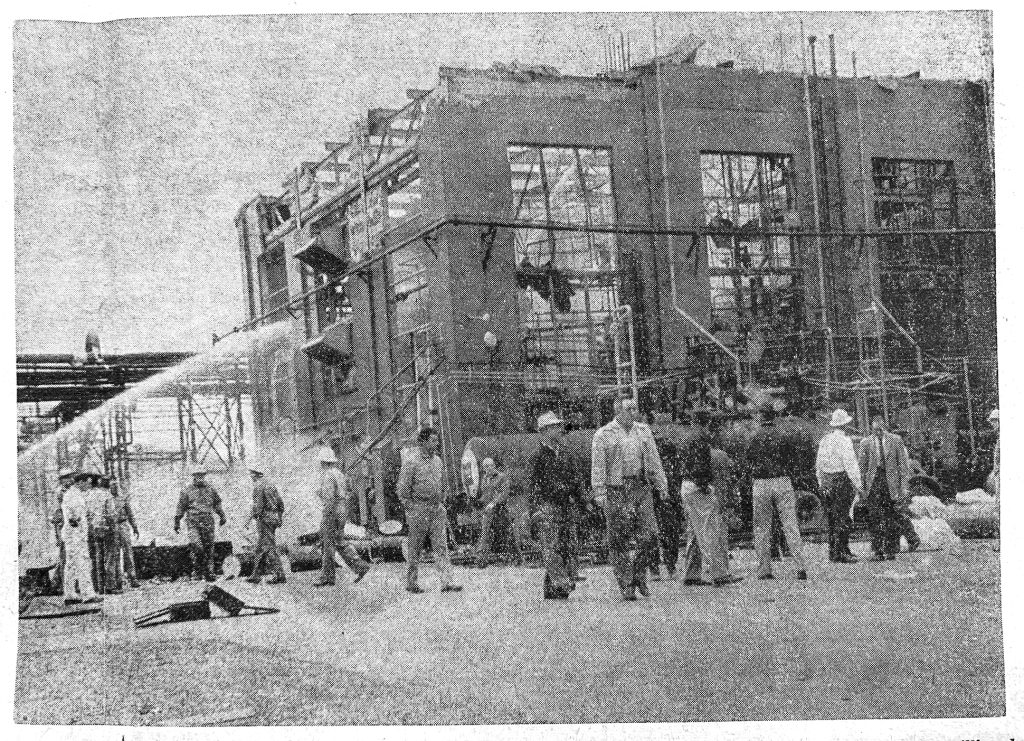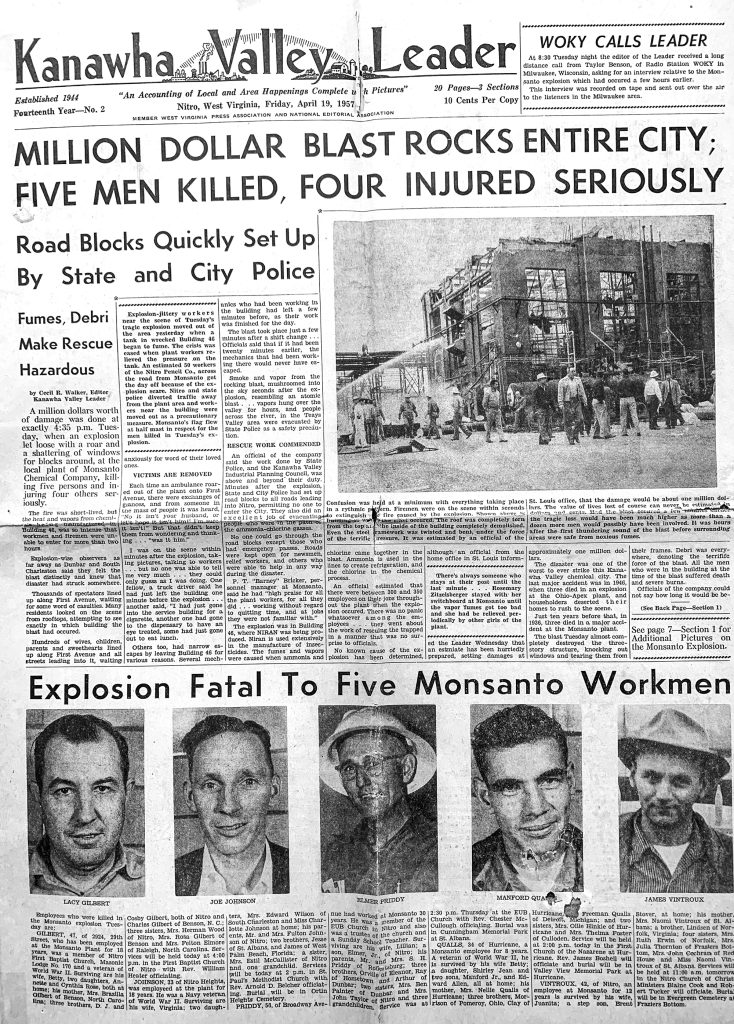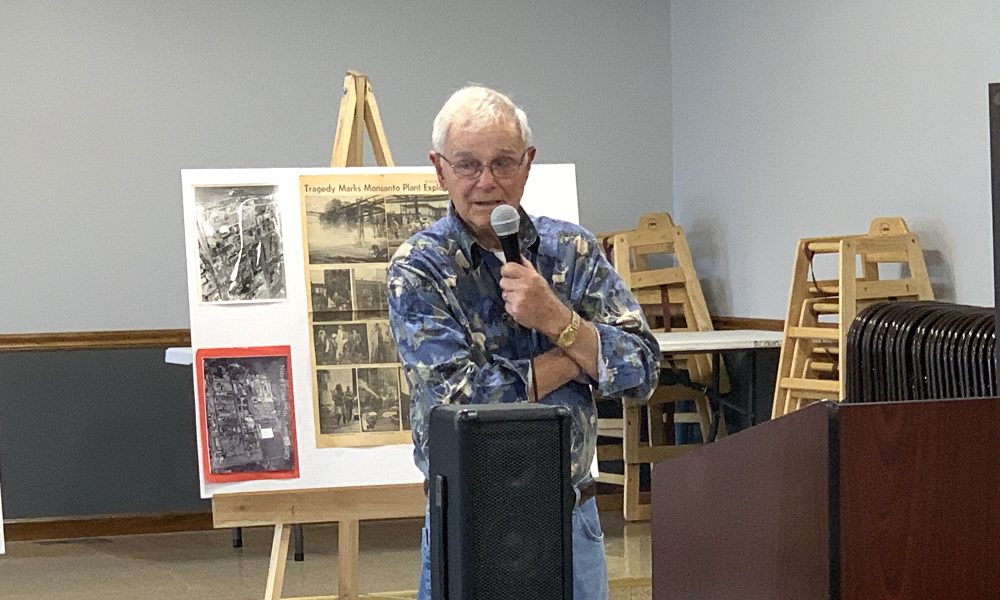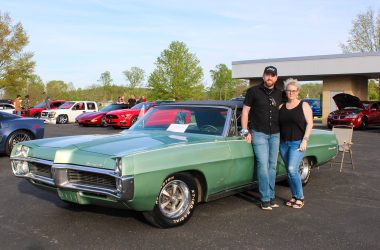William B. Parkins, Jr., presented an account of his memories.
William B. Parkins, Jr. discussed the 1957 Monsanto explosion in Nitro during the April 30 meeting of the Upper Vandalia Historical Society at the Bancroft Church of God Mission. An account of the explosion was also featured in this quarter’s issue of the historical society’s journal.
On April 16, 1957, at 4:38 p.m., a massive blast rocked Building 46 of the Monsanto plant, which was dedicated to producing an industrial pesticide called Niran. A 1000-gallon chlorination vessel containing 8,000 pounds of acid exploded, sending the lid of the chlorinator through the roof of the building. The actual chlorinator itself was driven into the first floor of the building, where it sank three feet into the ground.
Gasses released by the explosion caused severe third degree burns and respiratory inflammation which instantly killed three workers. The injured were taken to Thomas Hospital, where doctors and nurses had difficulty treating them due to the fumes from the chemicals on their bodies. Five more workers died within hours or days from injuries, and numerous others were hurt by shrapnel or exposure to toxic chemicals.
No one had anticipated the events of that day sixty-six years ago. The workers who had been closest to the blast zone were uncertain what had happened. Investigators had difficulty approaching the scene of the explosion due to fumes and peril from being injured by falling rubble. It was later determined that the chlorinator had overheated, resulting in an extreme build up of pressure.
The explosion rocked the city of Nitro, shaking the earth and blowing out the windows of surrounding buildings. Parkins related that the explosion drew crowds of worried family members and curious onlookers, whose safety could have been endangered by venturing too close to the hazardous zone.
Parkins was not an employee of Monsanto at the time of the explosion. He was stationed at Langley Air Force Base. His father and uncle, however, were employed at the plant and worked in the Niran department. Parkins stated that his father had been so upset by news of the explosion that he could barely speak him about it over the phone.
As a result of the 1957 Monsanto explosion in Nitro, the company put an emphasis upon redundant instrumentation to monitor temperature readings to reduce the possibility of future explosions. New safety procedures included personnel to be decontaminated before being transported to a hospital.
The tragedy resulted in the adaptation of heightened safety procedures throughout the chemical industry.
The Upper Vandalia Historical Society meets four times a year and publishes a quarterly journal. Their current meeting location is the Bancroft Church of God Mission. The next meeting will be on July 30.
